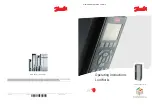
Remote Control Basics
R&S
®
SMB100A
266
Operating Manual 1407.0806.32 ─ 21
●
Numeric values are output without a unit. Physical quantities are referred to the
basic units or to the units set using the
Unit
command. The response
3.5E9
in
the previous example stands for 3.5 GHz.
●
Truth values (Boolean values) are returned as
0
(for OFF) and
1
(for ON).
Example:
Setting command:
HCOPy:DEV:COL ON
Query:
HCOPy:DEV:COL?
Response:
1
●
Text (character data) is returned in a short form.
Example:
Setting command:
HCOPy:PAGE:ORIentation LANDscape
Query:
HCOP:PAGE:ORI?
Response:
LAND
6.4 Command Sequence and Synchronization
IEEE 488.2 defines a distinction between overlapped and sequential commands:
●
A sequential command is one which finishes executing before the next command
starts executing. Commands that are processed quickly are implemented as
sequential commands. Sequential commands are not implemented in the instru-
ment, however the execution time of most commands is so short that they act as
sequential commands when sent in different command lines.
●
An overlapping command is one which does not automatically finish executing
before the next command starts executing. Usually, overlapping commands take
longer to process and allow the program to do other tasks while being executed. If
overlapping commands do have to be executed in a defined order, e.g. in order to
avoid wrong measurement results, they must be serviced sequentially. Keeping the
order is called synchronization between the controller and the instrument.
Setting commands within one command line, even though they can be implemented as
sequential commands, are not necessarily serviced in the order in which they have
been received. To make sure that commands are actually executed in a certain order,
each command must be sent in a separate command line.
Command Sequence and Synchronization
















































